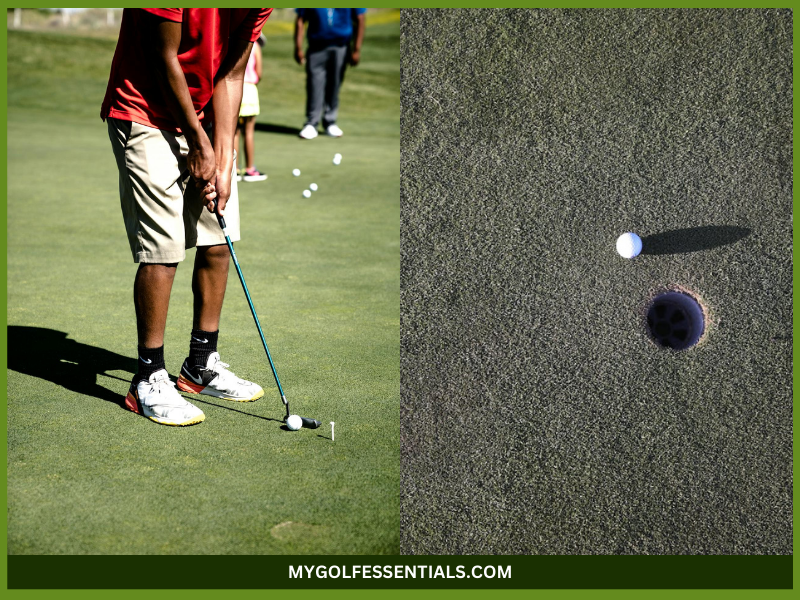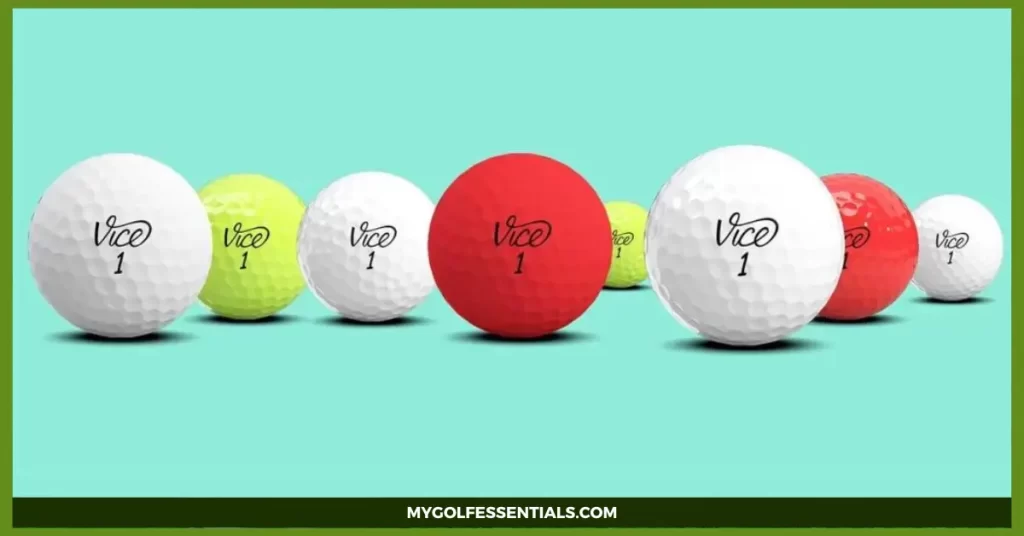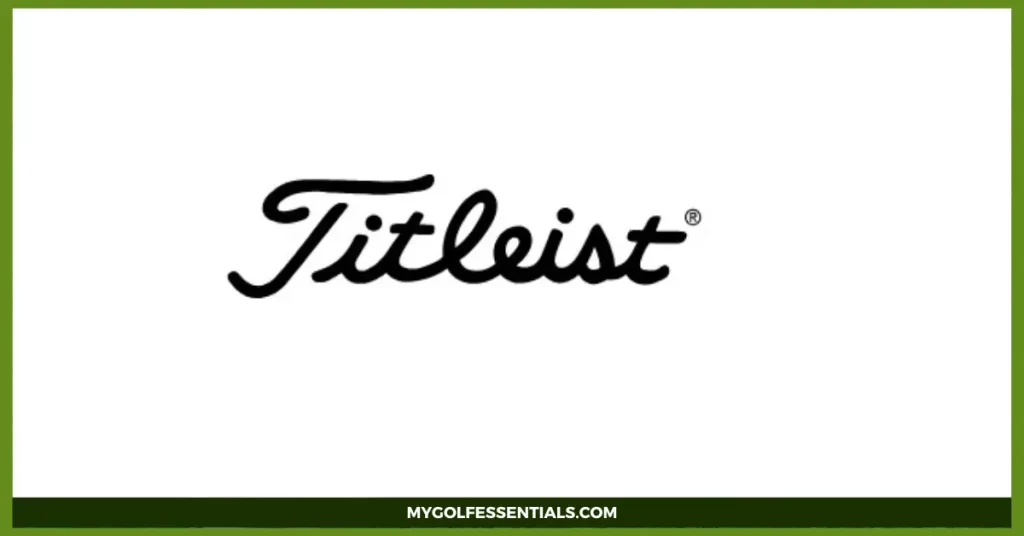
Golfers of all skill levels know the frustration of topping the ball, an issue that happens when the club barely grazes the ball and sends it skittering along the ground instead of soaring through the air. If this common mishap has been affecting your game, you’re not alone, and there’s good news: it’s fixable!
In this guide, we’ll break down the causes of topping the ball and provide practical tips to help you improve your swing and make solid contact every time. Therefore, we invite you to read on and learn to take your game to the next level and avoid topping the ball for good.
Without further ado, let’s get started…
What Is Meant By Topping the Ball In Golf?
Topping the ball in golf refers to a shot where the clubhead makes contact with the top half of the ball rather than its center, causing the ball to roll along the ground instead of gaining proper lift. This issue can disrupt your game and frustrate even experienced golfers.
Therefore, having a good understanding of why this happens is the first step to improving your swing and achieving more consistent results.
Common Causes of Topped Shots
- Poor Posture and Swing Mechanics: Slouching or improper stance can make it difficult to achieve solid contact with the ball. An inconsistent swing path, especially when the clubhead doesn’t travel low enough, often leads to topped shots.
- Incorrect Ball Positioning: Placing the ball too far forward or backward in your stance can throw off the timing and angle of your swing. The wrong positioning may cause you to hit the ball during the upswing rather than at the ideal point of impact.
- Body Movement During the Swing: Excessive movement, like lifting your head or straightening your legs, can pull the club away from its intended path. Overcompensating for balance or trying to generate extra power can also result in topping the ball.
By identifying these common causes, you can take targeted steps to correct your technique and make cleaner, more effective shots.
Key Techniques to Avoid Topping In Golf
Improving your game starts with addressing the fundamentals. Here are the key techniques to help you avoid topping the ball and achieve cleaner, more accurate shots:
1. Practice Proper Ball Positioning
Ball positioning is the placement of the ball relative to your stance, and it varies based on the club you’re using. Correct positioning ensures solid contact and a clean shot trajectory.
Why It’s Important:
- Correct ball positioning aligns the ball with the lowest point of your swing arc, preventing topped shots.
- It contributes to consistent strikes and improved accuracy across different clubs.
How to Practice It:
- Begin with a balanced stance, feet shoulder-width apart.
- Place the ball just inside your lead foot for drivers and near the center of your stance for irons.
- Use alignment sticks or a club laid on the ground as a guide to maintain consistency during practice.
- Gradually adjust your stance based on feedback from your shots.
Pro Tip:
- During practice, focus on your shoulder alignment. Here, your lead shoulder should point slightly higher than your trail shoulder to encourage an upward strike on the ball, especially with drivers.
2. Maintain a Steady Posture
Maintaining a steady posture means keeping your body balanced and controlled throughout the swing. This stability ensures proper clubhead contact with the ball and prevents unnecessary movements that lead to topping.
Why It’s Important:
- A steady posture minimizes unnecessary body movement, reducing the risk of the club missing its intended path.
- It promotes consistency in your swing and improves overall ball striking.
How to Practice It:
- Stand with your knees slightly bent and your weight evenly distributed across your feet.
- Keep your back straight but relaxed, and tilt slightly from your hips to reach the ball.
- Focus on keeping your head still and your eyes on the ball until after impact.
- Practice slow-motion swings to maintain stability and ensure proper alignment.
Pro Tip:
- Imagine a string running from the top of your head to the ground. Visualizing this helps you maintain a centered position and prevents unnecessary lifting or swaying during your swing.
3. Practice Using Proper Swing Mechanics
Proper swing mechanics involve maintaining a smooth, controlled swing path from start to finish. This ensures the clubhead travels through the ball at the correct angle for clean contact.
Why It’s Important:
- Improper swing mechanics, like rushing or overextending, often cause the club to skim the ball.
- Refining your swing mechanics leads to better ball flight and more consistent results.
How to Practice It:
- Start with a controlled backswing, ensuring your arms and shoulders move in sync.
- Focus on maintaining a smooth tempo as you transition to the downswing.
- Strike the ball cleanly and follow through completely, keeping the clubhead low through impact.
- Use drills like swinging with a weighted club or practicing with slow-motion swings to refine your mechanics.
Pro Tip:
- Film your swing to analyze your mechanics. Look for points where your form breaks down and focus on correcting them in your practice sessions.
4. Master Weight Transfer
Weight transfer involves shifting your weight from your back foot to your lead foot during the swing. This movement helps generate power and ensures the clubhead stays on the proper path.
Why It’s Important:
- Proper weight transfer allows you to maintain balance and deliver the club with optimal force.
- It reduces the risk of leaning back or losing posture, both of which contribute to topping the ball.
How to Practice It:
- Begin your swing with your weight evenly distributed.
- During the backswing, let your weight naturally shift to your back foot.
- As you initiate the downswing, shift your weight forward onto your lead foot.
- Finish with most of your weight on your lead foot, ensuring a balanced follow-through.
Pro Tip:
- Use a simple drill: practice swinging with your feet together to focus on balance and weight transfer. Once you feel comfortable, gradually return to a wider stance while maintaining the same principles.
By focusing on these techniques and incorporating them into your practice sessions, you’ll build a more consistent swing and drastically reduce topped shots.
Drills and Exercise Ideas To Avoid Topping The Ball In Golf
Practicing specific drills can help reinforce proper technique and eliminate bad habits. Here are three effective exercises to help you avoid topping the ball:
1. Towel Drill
The towel drill is a simple yet effective exercise designed to help golfers improve their swing path and ensure solid contact with the ball. It focuses on eliminating improper body movement that can lead to topping.
Why It’s Important:
- Helps maintain a proper swing plane by preventing the club from rising too early during the downswing.
- Encourages consistent contact with the ball by improving body control and posture.
How to Perform It:
- Place a towel about 6 inches behind the golf ball on the ground.
- Set up as you normally would, ensuring the towel is directly in the path of your club.
- Swing through the ball without hitting the towel. Striking the towel indicates the club is too steep or your swing mechanics need adjustment.
- Repeat the drill until you can consistently avoid the towel while making clean contact with the ball.
Pro Tip:
- Start with slower swings to build consistency and gradually increase your speed as your form improves.
2. Contact Point Drill
The contact point drill helps golfers focus on hitting the ball at the center of the clubface, ensuring a clean and powerful strike.
Why It’s Important:
- Improves accuracy and ball flight by promoting consistent impact.
- Reduces mishits caused by incorrect positioning or swing errors.
How to Perform It:
- Use foot spray or dry-erase marker to mark the face of your club.
- Hit a few shots and observe where the ball makes contact on the clubface.
- Adjust your stance, posture, or ball positioning based on the results.
- Aim to consistently strike the center of the clubface during this drill.
Pro Tip:
- Combine this drill with video analysis of your swing to identify and correct any flaws in your mechanics.
3. The Tee Drill
The tee drill focuses on ensuring that your swing arc reaches the correct depth to strike the ball cleanly, making it a great exercise to avoid topping.
Why It’s Important:
- Encourages a low, sweeping swing motion that prevents the club from skimming the top of the ball.
- Improves confidence and consistency by simulating real-course conditions.
How to Perform It:
- Place a tee in the ground so that only the top half is exposed above the surface.
- Set up to the tee as if it were a golf ball.
- Swing and attempt to clip the top of the tee without digging into the ground.
- Repeat until you can consistently strike the tee cleanly with a smooth swing.
Pro Tip:
- Progress to placing a ball on the tee after mastering the drill to transition the practice into real play scenarios.
Incorporate these drills into your practice routine to develop better habits and improve your consistency on the course.
Common Mistakes to Avoid When Trying to Avoid Topping the Ball
While improving your swing mechanics is essential, there are common mistakes that can hinder your progress. Avoiding these errors will help you make more consistent contact and reduce the chances of topping the ball:
1. Over-swinging or Rushing Through Swings
Over-swinging occurs when golfers try to generate too much power, often at the expense of proper form and control. Similarly, rushing through swings can lead to inconsistent contact.
Why It’s Important to Avoid:
- Over-swinging disrupts balance and leads to mishits, including topping.
- Rushing prevents a smooth, controlled swing, increasing the likelihood of poor contact.
How to Avoid:
- Focus on maintaining a relaxed grip and steady tempo.
- Practice slow-motion swings to emphasize control over speed.
- Remember, a controlled swing often generates more accurate and effective power than a rushed one.
2. Losing Focus on the Ball Before Impact
Taking your eyes off the ball too soon can cause you to lift your head or alter your posture, leading to topped shots.
Why It’s Important to Avoid:
- Keeping your focus on the ball ensures proper alignment and consistent contact.
- Lifting your head prematurely disrupts your swing mechanics.
How to Avoid:
- Keep your eyes locked on the back of the ball throughout your swing.
- Use drills like counting aloud until after impact to reinforce focus.
- Avoid the temptation to look at the shot’s trajectory before completing your follow-through.
3. Incorrectly Adjusting Stance Based on Fear of Topping
Some golfers react to topping by making extreme or unnecessary adjustments to their stance, which often leads to more inconsistency.
Why It’s Important to Avoid:
- Overcompensation can disrupt your natural swing and lead to other issues like slicing or poor contact.
- Proper adjustments should be intentional and based on sound advice or coaching.
How to Avoid:
- Stick to the fundamentals of a balanced stance and correct ball positioning.
- Consult a coach or use video feedback to identify the root cause of your topping issue.
- Focus on making gradual, purposeful adjustments instead of drastic changes.
By avoiding these common mistakes, you’ll be better equipped to consistently strike the ball with precision and avoid the frustration of topping your shots.
Professional Guidance
Sometimes, despite diligent practice, golfers may still struggle with topping the ball. Seeking professional guidance can provide tailored solutions to specific swing issues. Here’s when and how to benefit from expert advice:
1. When to Seek Lessons from a PGA Professional
Signs You Should Seek Professional Guidance:
- Persistent Topping Issues: If you consistently top the ball despite trying drills and adjustments on your own, a professional can pinpoint the underlying causes.
- Inconsistent Swing Path: If your swing feels erratic or you struggle to repeat a solid shot, a PGA professional can help you refine your technique for more consistency.
- Posture and Alignment Problems: A coach can assess your posture, stance, and alignment to ensure you’re starting with the right foundation.
- Lack of Confidence: If you’re feeling frustrated or overwhelmed, a lesson with a professional can help restore your confidence with a clear, structured plan.
What to Expect from a PGA Lesson:
- A professional will conduct a detailed assessment of your swing, offering personalized drills and adjustments tailored to your needs.
- They’ll provide ongoing feedback, which helps you track improvements over time.
- Regular lessons provide accountability and accelerate improvement.
2. Benefits of Video Analysis for Identifying Swing Flaws
Video analysis allows you to capture and review your swing from multiple angles. With the assistance of technology, a coach can provide detailed feedback on your swing mechanics.
Why It’s Effective:
- Visual Feedback: Video allows you to see your swing in slow motion, helping you spot issues like poor posture, incorrect angles, or over-the-top movements that may be leading to topped shots.
- Side-by-Side Comparisons: Coaches can compare your swing to ideal models or pro swings, offering a clear visual reference for what needs adjustment.
- Clear Progress Tracking: Capturing your swing over time lets you visually track your improvement, reinforcing the impact of your lessons.
How to Use Video Analysis Effectively:
- Record from Multiple Angles: Capture your swing from both the front and the side to get a complete picture of your mechanics.
- Focus on Key Moments: Pay close attention to the setup, transition, and impact points to identify any flaws that might be causing the topping.
- Review with a Coach: Work with your PGA professional to break down the footage and develop specific action points based on what you see.
Pro Tip:
If you don’t have access to a professional video analysis system, use your smartphone or tablet to record and review your swings. Even basic footage can provide valuable insights into your technique when compared to ideal positions.
By seeking professional guidance and leveraging video analysis, you can gain a deeper understanding of your swing and make targeted improvements, leading to more consistent ball striking and fewer topped shots.
Final Thoughts
Topping the ball is a common frustration for golfers at every skill level, but with the right approach, it can be avoided. You can drastically improve your contact and consistency by focusing on key aspects such as ball positioning, posture, swing mechanics, and weight transfer. Incorporating targeted drills like the towel, contact point, and tee drills will help reinforce proper technique and build muscle memory.
However, if persistent topping issues remain despite your best efforts, seeking professional guidance from a PGA professional can be invaluable. Video analysis, in particular, is an excellent tool for identifying swing flaws and refining your technique with detailed feedback.
By following these tips and continually practicing, you’ll be well on your way to eliminating topped shots and elevating your golf game.
Key Takeaways
- Topping the Ball occurs when the clubhead strikes the top half of the ball, causing it to roll along the ground instead of flying into the air.
- Common Causes of topped shots include poor posture, incorrect ball positioning, and excessive body movement during the swing.
- Proper Ball Positioning ensures the ball is aligned with the lowest point of your swing arc for consistent contact and accurate shots.
- Steady Posture minimizes unnecessary body movements, promoting better swing consistency and reducing the risk of topping.
- Swing Mechanics should be smooth and controlled, with a focus on maintaining tempo and following through to ensure clean contact with the ball.
- Weight Transfer from your back foot to your lead foot during the swing helps maintain balance and generate power for solid ball striking.
- Drills like the Towel Drill, Contact Point Drill, and Tee Drill are effective ways to practice swing mechanics, posture, and ball striking to avoid topping.
- Avoid Common Mistakes such as rushing through swings, losing focus on the ball before impact, and overcompensating with drastic adjustments to your stance.
- Video Analysis can help identify swing flaws and provide visual feedback, making it easier to pinpoint areas for improvement.
- Seek Professional Guidance if topping remains a persistent issue. A PGA professional can offer personalized feedback and drills to refine your swing and improve consistency.
FAQs
Does my equipment affect topping?
Yes, using the correct tee height and selecting appropriate golf balls can influence your chances of topping. Ensure that your tee height allows for clean contact with the ball, and consider using balls suited for your swing speed and style.
Why do I keep topping my driver shots specifically?
Topping driver shots often results from having the ball positioned too far forward in your stance or not maintaining proper posture during your swing. Adjusting your stance and ensuring a consistent swing path can help mitigate this issue.
Can professional lessons help with topping issues?
Yes, lessons from a PGA professional can provide personalized feedback and techniques tailored to your specific swing faults, helping you develop better habits and improve overall performance.



